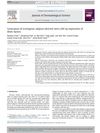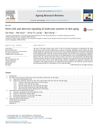TLDR Adipose-derived stem cells show promise for hair growth but need improvement for clinical use.
Adipose-derived stem cells (ASCs) were explored for their potential in hair regeneration, showing promise in animal studies and in vitro experiments where they promoted hair growth and cell proliferation. However, their effectiveness in clinical settings was limited. The study discussed ASC preconditioning as a strategy to improve their efficacy, highlighting methods such as using vitamin C, platelet-derived growth factor, hypoxia, and ultraviolet B as stimulators. The research emphasized the role of ASCs in hair cycle progression and evaluated the pros and cons of their application in hair regeneration.
 12 citations
,
August 2018 in “Journal of Dermatological Science”
12 citations
,
August 2018 in “Journal of Dermatological Science” Scientists made stem cells that can grow hair by adding three specific factors to them.
 42 citations
,
February 2014 in “Stem Cells and Development”
42 citations
,
February 2014 in “Stem Cells and Development” Vitamin C helps adipose-derived stem cells grow and may support hair growth.
 76 citations
,
August 2018 in “International Journal of Cosmetic Science”
76 citations
,
August 2018 in “International Journal of Cosmetic Science” Dermal Papilla cells are a promising tool for evaluating hair growth treatments.
 28 citations
,
December 2012 in “The American Journal of Cosmetic Surgery”
28 citations
,
December 2012 in “The American Journal of Cosmetic Surgery” Proteins from stem cells improved hair growth in patients with hair loss.
 55 citations
,
May 2017 in “Current stem cell research & therapy”
55 citations
,
May 2017 in “Current stem cell research & therapy” Using fat-derived stem cells for hair loss treatment is safe and effective, improving hair growth and patient satisfaction.
 25 citations
,
November 2014 in “Ageing Research Reviews”
25 citations
,
November 2014 in “Ageing Research Reviews” Skin aging is caused by stem cell damage and can potentially be delayed with treatments like antioxidants and stem cell therapy.






